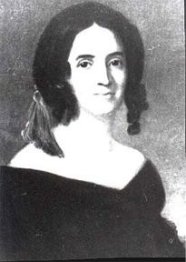September 4 is:
Labor Day Labor Day is a federal holiday in the United States celebrated on the first Monday in September to honor and recognize the American labor movement and the works and contributions of laborers to the development and achievements of the United States.
Newspaper Carrier Day
Eat an Extra Dessert Day
National Wildlife Day
National Macadamia Nut Day
Per foodimentary.com:
- Macadamia nuts are native to Australia. They are named for John Macadam, a Scottish born physician and chemist who promoted the nuts cultivation in Australia.
- The Macadamia Nut is one of Australia’s few contributions to the world’s food plants, and this rich, buttery nut is considered by many to be the most delicious of all nuts.
- The Macadamia was introduced into Hawaii around 1881 and used as an ornamental. The first commercial orchards of macadamias in Hawaii were not planted until 1921.
- Most of the world’s macadamia nuts are grown on the island of Hawaii.
- Today Macadamias are cultivated in many areas, including Indonesia, Central America, South Africa, the West Indies, Mediterranean countries and California.
Birthday of the City of Los Angeles in 1781. A group of forty-four settlers known as “Los Pobladores” founded the pueblo called “El Pueblo de Nuestra Señora la Reina de los Angeles del Río de Porciúncula”; in English it is “The Town of Our Lady the Queen of Angels of the Porciúncula River”. Two-thirds of the settlers were mestizo or mulatto with a mixture of African, indigenous and European ancestry. The settlement remained a small ranch town for decades, but by 1820 the population had increased to about 650 residents. Today, the pueblo is commemorated in the historic district of Los Angeles Pueblo Plaza and Olvera Street, the oldest part of Los Angeles.
Birthday of Marcus Whitman (September 4, 1802), American pioneer and missionary physician who, along with his wife Narcissa Whitman, started a mission to the Cayuse in what is now southeastern Washington state in 1836. The area later developed as a trading post and stop along the Oregon Trail, and the city of Walla Walla, Washington developed near there. A measles epidemic in 1847 killed all the Cayuse children and about half of the Cayuse adults. The Indians held the Whitmans responsible and killed Marcus, Narcissa, and 12 other settlers.
 Birthday of Sarah Childress Polk (September 4, 1803), wife of James Knox Polk, first lady 1845-1849. From Biography of Sarah Childress Polk:
Birthday of Sarah Childress Polk (September 4, 1803), wife of James Knox Polk, first lady 1845-1849. From Biography of Sarah Childress Polk:
Sarah Polk is said to have been serious, religious, a proper lady in every way except in her love of politics and gentlemanly conversation. She was known to remain behind with the men to talk, rather than retire to the parlor with the ladies. Humor was never a strong point with her (or with her husband). She… eventually took on the duties of an unpaid secretary to her husband.
From Today in Science
Box Camera
In 1888, George Eastman was issued a landmark U.S. patent No. 388,850 for his box camera. On the same date, he registered the trademark name: Kodak. The Eastman Kodak company was formed 24 Apr 1888. This design was the first Kodak mass-produced camera, and brought photography to the mass market. As described in its advertising, the operation was simple: “Pull the String, Turn the Key, Press the Button.” Now anyone could take pictures family, events, indoor and outdoor scenes, and vacations, without needing special skills. Only 22-ounces in weight, it required no tripod or table for support. It used a fixed-focus lens which was still fast enough to take practically instantaneously exposures. Its roll film was enough to take 100 pictures, each 2½ inches diameter.
From Today in Science
In 1906, U.S. patent No. 830,115 was issued to Robert Eugene Turner of Norfolk, Virginia, for his invention of a “Type Writing Machine,”(typewriter) with a carriage powered by a motor to “return automatically when the end of the writing-line is reached, also to return same by pressing a key-lever on the keyboard to return the carriage at any point of its stroke.” Also, line spacing was provided by manual or automatic means. A low-powered motor was adapted to feed the carriage in the printing direction, a high-powered motor for returning the carriage in the reverse direction, and the necessary mechanism to control their action. A buffering mechanism was included to reduce the impact of the returning carriage at the end of its reverse stroke.
From Today in Science
Transcontinental Television
In 1951, President Harry Truman inaugurated transcontinental television service in the U.S. when AT&T carried his address to the opening session of the Japanese Peace Convention in San Francisco. The conference would formalize the end of hostilities with Japan, opening the door for Japan’s economic recovery. The largest single television audience to date, estimated at over 30 million people, viewed President Harry Truman, some as far away as New England. Eighty-seven stations all over the U.S. received and broadcast Truman’s speech, the result of a $40 million infrastructure investment by AT&T. Microwave radio technology transmitted the television signal from San Francisco to Chicago. From there, it was carried on existing coaxial cables to the East Coast.
